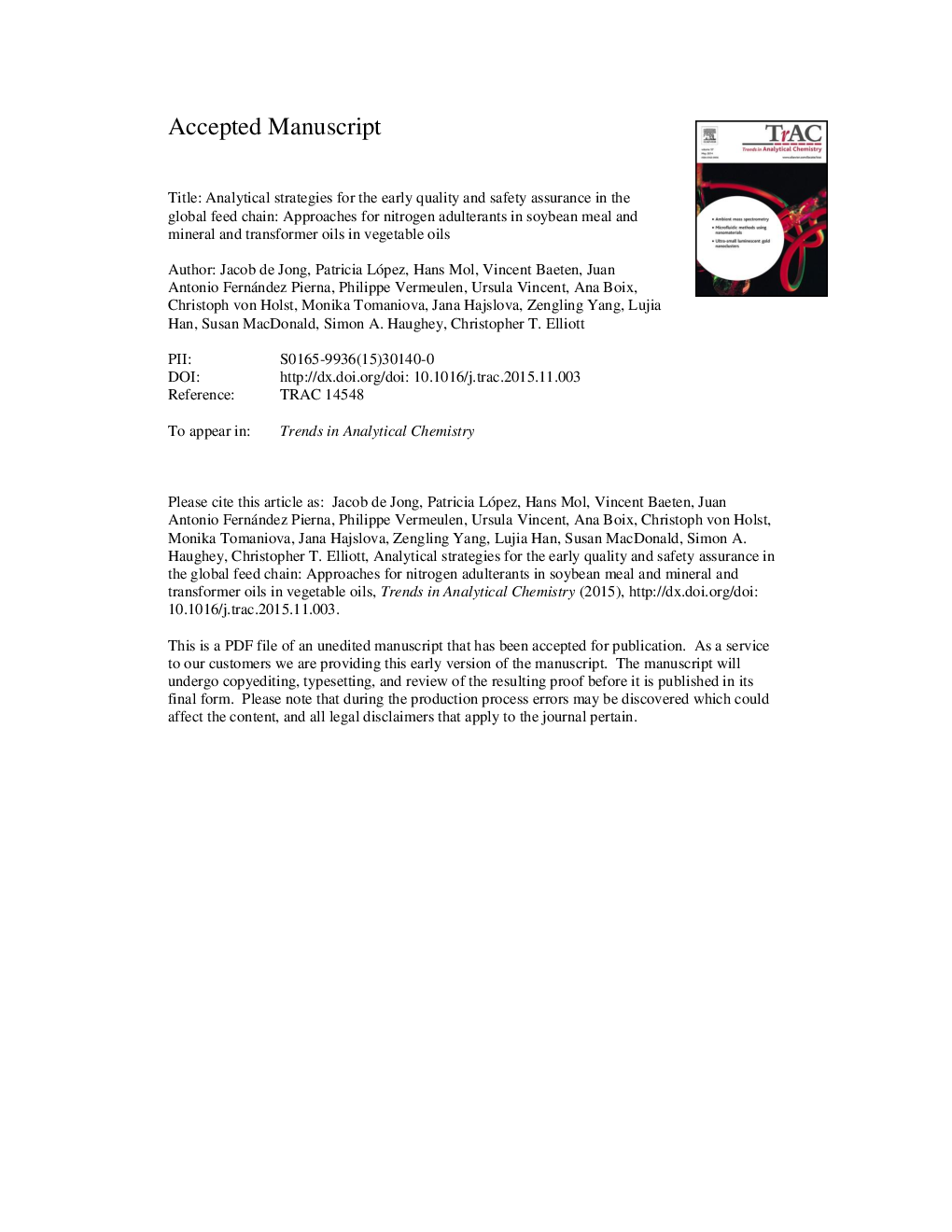| Article ID | Journal | Published Year | Pages | File Type |
|---|---|---|---|---|
| 7689205 | TrAC Trends in Analytical Chemistry | 2016 | 22 Pages |
Abstract
In the past decade, several major food safety crises originated from problems with feed. Consequently, there is an urgent need for early detection of fraudulent adulteration and contamination in the feed chain. Strategies are presented for two specific cases, viz. adulterations of (i) soybean meal with melamine and other types of adulterants/contaminants and (ii) vegetable oils with mineral oil, transformer oil or other oils. These strategies comprise screening at the feed mill or port of entry with non-destructive spectroscopic methods (NIRS and Raman), followed by post-screening and confirmation in the laboratory with MS-based methods. The spectroscopic techniques are suitable for on-site and on-line applications. Currently they are suited to detect fraudulent adulteration at relatively high levels but not to detect low level contamination. The potential use of the strategies for non-targeted analysis is demonstrated.
Related Topics
Physical Sciences and Engineering
Chemistry
Analytical Chemistry
Authors
Jacob de Jong, Patricia López, Hans Mol, Vincent Baeten, Juan Antonio Fernández Pierna, Philippe Vermeulen, Ursula Vincent, Ana Boix, Christoph von Holst, Monika Tomaniova, Jana Hajslova, Zengling Yang, Lujia Han, Susan MacDonald, Simon A. Haughey,
